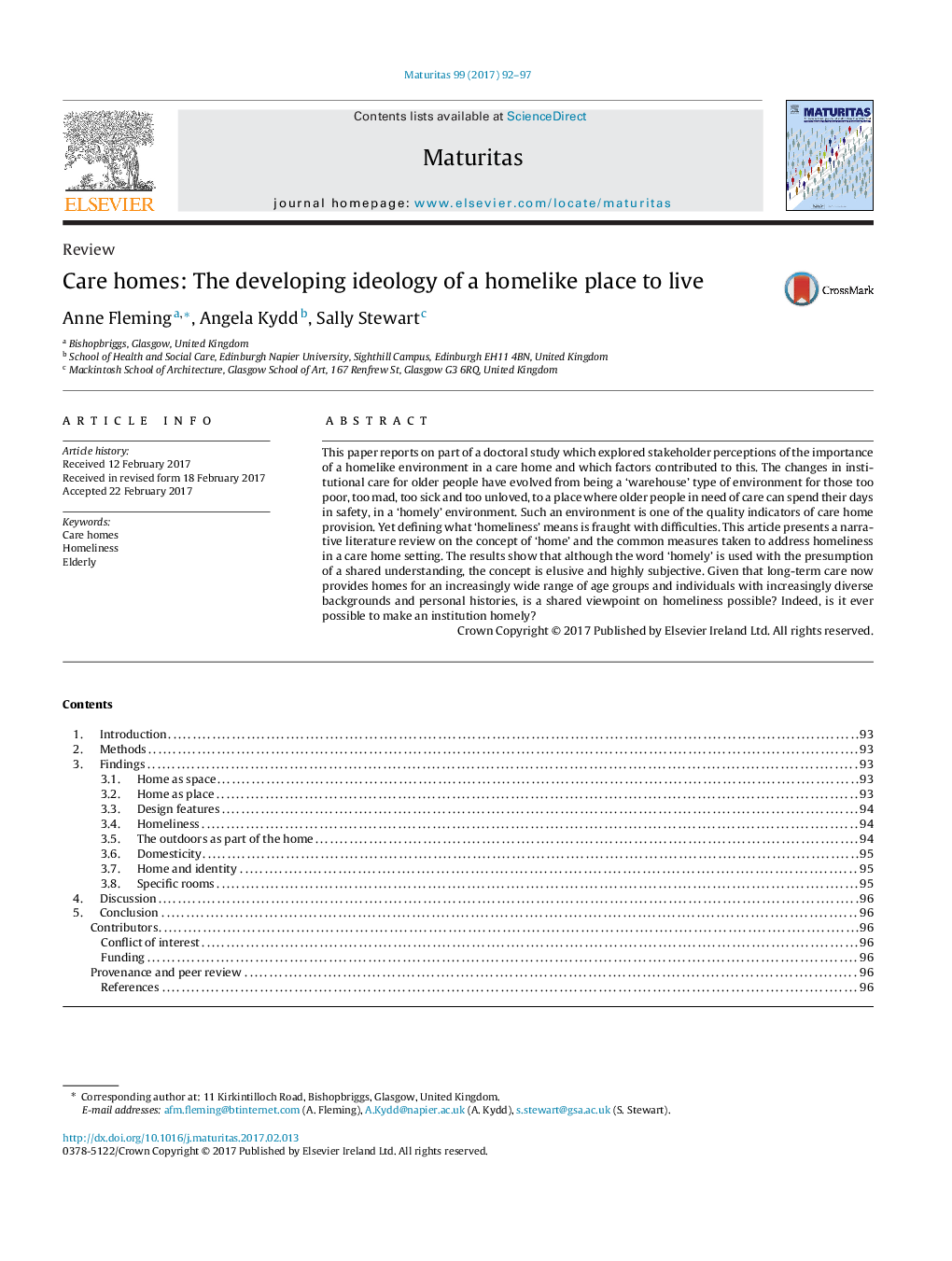| Article ID | Journal | Published Year | Pages | File Type |
|---|---|---|---|---|
| 5503511 | Maturitas | 2017 | 6 Pages |
Abstract
This paper reports on part of a doctoral study which explored stakeholder perceptions of the importance of a homelike environment in a care home and which factors contributed to this. The changes in institutional care for older people have evolved from being a 'warehouse' type of environment for those too poor, too mad, too sick and too unloved, to a place where older people in need of care can spend their days in safety, in a 'homely' environment. Such an environment is one of the quality indicators of care home provision. Yet defining what 'homeliness' means is fraught with difficulties. This article presents a narrative literature review on the concept of 'home' and the common measures taken to address homeliness in a care home setting. The results show that although the word 'homely' is used with the presumption of a shared understanding, the concept is elusive and highly subjective. Given that long-term care now provides homes for an increasingly wide range of age groups and individuals with increasingly diverse backgrounds and personal histories, is a shared viewpoint on homeliness possible? Indeed, is it ever possible to make an institution homely?
Keywords
Related Topics
Life Sciences
Biochemistry, Genetics and Molecular Biology
Ageing
Authors
Anne Fleming, Angela Kydd, Sally Stewart,
